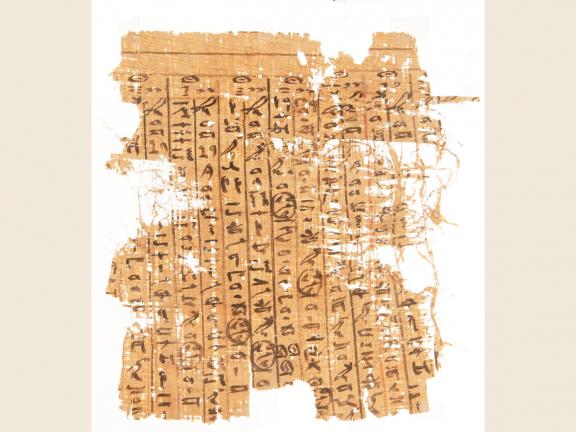This two-part lecture gives insights into new findings.
Wadi el-Jarf: The Harbor of King Khufu on the Red Sea and Its Papyrus Archive
Pierre Tallet, chair, Egyptology, Paris-Sorbonne University
The Wadi el-Jarf site, excavated since 2011 by a team from Paris-Sorbonne University, is a harbor on the Red Sea that was used at the beginning of the Fourth dynasty of ancient Egypt to reach the copper and turquoise mines of the southwestern part of the Sinai Peninsula. In 2013, hundreds of fragments of papyrus from the end of Khufu’s reign (about 2551–2528 BC) were collected at the entrance of one of the site’s storage galleries. This is the oldest papyrus archive found in Egypt; produced by a team of sailors well known among archeologists for their work on the ancient harbor, the discovery consists of accounts of commodities delivered to the workers, and logbooks recording their daily activities over several months. Most surprisingly, the logbooks do not record the activity of this group on the Wadi el-Jarf site but describe previous missions under the direction of “Inspector Merer” transporting limestone blocks from the quarries of Tura to the Great Pyramid of Khufu at Giza, then under construction on the opposite bank of the Nile.
Merer, the Sphinx, and the Lost Port City of the Pyramids
Mark Lehner, director, Ancient Egypt Research Associates
Ancient Egypt Research Associates (AERA) explores the deepest layers of the Lost Port City of the Pyramids for evidence of Khufu, builder of the Great Pyramid of Giza. New archeological evidence allows us to visualize waterways and harbors flanking the Lost City, the Sphinx, and the Pyramids. The Journal of Merer, part of Egypt’s oldest inscribed papyri, opens a window onto daily use of the Giza waterways—and possible overnights, dockside, at the Lost City.
